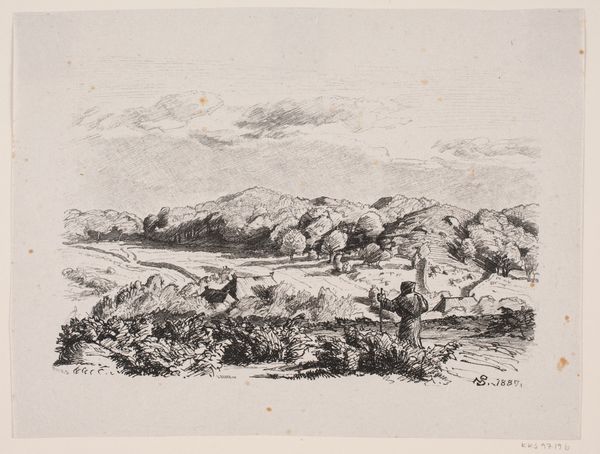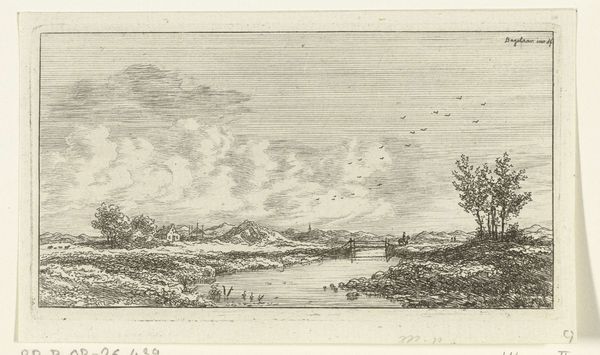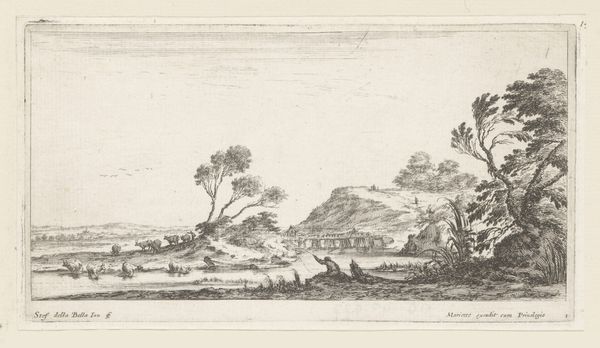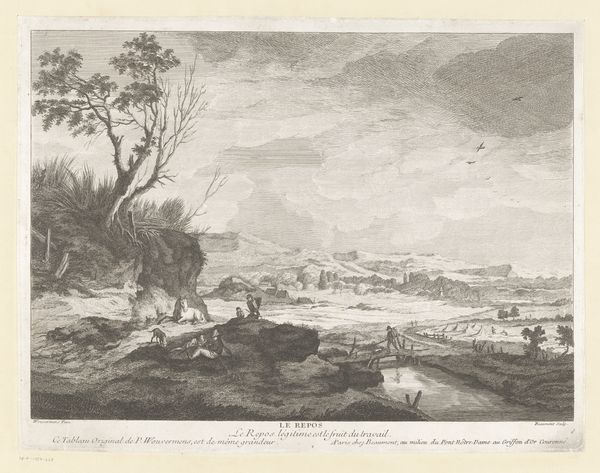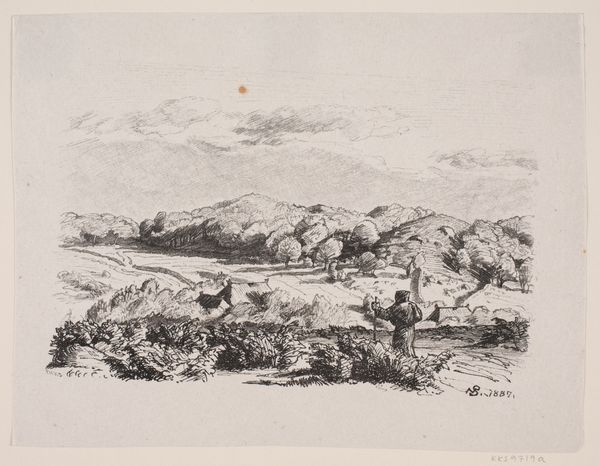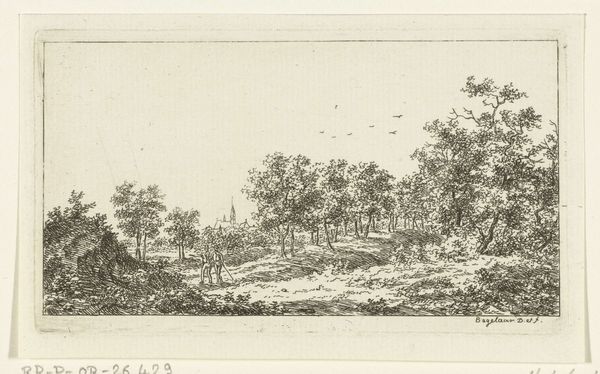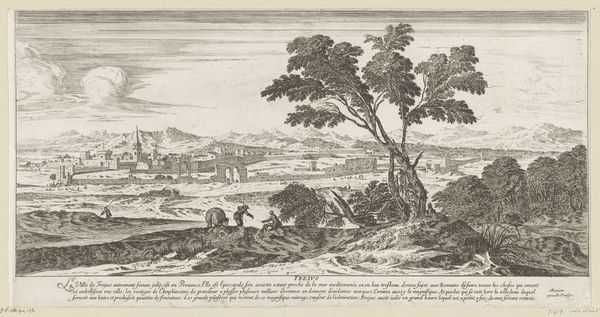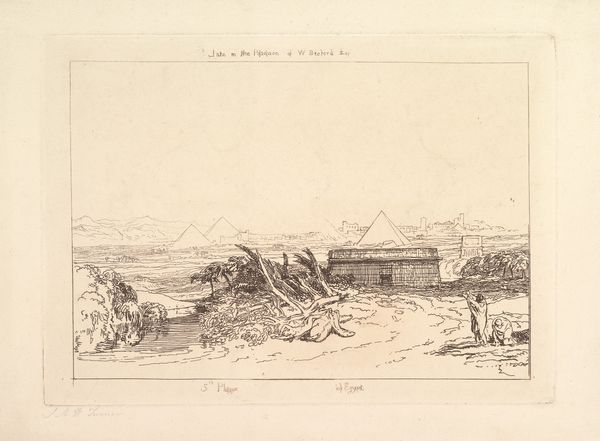
Dimensions: height 98 mm, width 170 mm
Copyright: Rijks Museum: Open Domain
Carl Wilhelm Weisbrod made this small etching, "River View with Fishermen and Herders with Cattle," sometime in the 18th century. It's an image that on the surface looks like a simple pastoral scene. But the presence of the fishermen hauling what looks like a net through the river suggests a connection to the developing commercial economy of the 1700s. While shepherds and herds of cattle were traditional images of rural life, Weisbrod places them alongside signs of a changing economy. Weisbrod, who was born in Berlin, was clearly influenced by Dutch Italianate painters. In contrast to the northern landscapes favoured by his contemporaries, Weisbrod's etching adopts an Italianate pictorial language. The study of prints and other images from the period can help historians reconstruct how people experienced and understood these economic and cultural shifts. How did artists negotiate their place within this changing world? Investigating such questions can lead to a richer understanding of works like this.
Comments
No comments
Be the first to comment and join the conversation on the ultimate creative platform.
